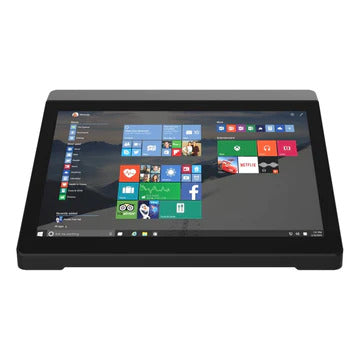The evolution of touchscreen personal computers has been nothing short of a mesmerizing voyage in a field where technological marvels dance across the epochs of development. The growth of these devices tells a story that has captured the attention of the tech-savvy world since they first took on small, unassuming forms and emerged as powerful, finless setups.
One can see the significant evolution touch screen Mini Computers With Windows 11 have undergone as they travel through time. The beginning was symbolized by the emergence of small designs, with each screen as a doorway to a universe of limitless potential. Despite their small size, these early iterations were titans of innovation and heralded a new age in human-computer interaction. These machines continuously pushed the envelope of expectations as they grew older, gradually realizing their full potential.
But evolution never stands still, and the technological world feeds on constant change. Thus began the era of authoritarian, finless designs, where touchscreen PCs became hardy friends who could withstand the test of the elements. These harsh wonders define toughness, unaffected by complex conditions or situations. As they join experts in the most challenging environments, they redefine what it means to be adaptable.
The history of touchscreen PCs symbolizes constant improvement as we stand on the cusp of tomorrow's discoveries. The growth continues, starting with the tiny wonders that ignited the revolution and ending with the rigid sentinels that dare to break boundaries. Touch screen PCs are indomitable in a world where the physical and digital worlds are inextricably entwined, a monument to human creativity and the unrelenting pursuit of advancement.
The Rise of Small Touch Screen PCs.
Small touchscreen PCs have quickly become a part of our daily lives, offering a balance of convenience and adaptability. Their small size, frequently smaller than a tablet, provides a distinctive offering. The benefits of a full-featured computer are available with these portable devices, which also smoothly blend into various settings. The small touchscreen PC is in any modest home office setup, clutter-free educational facility, or space-constrained retail establishment.
Enter the Touch Screen Mini PC.
The touch screen mini PC expands on the idea of portable computing. These little powerhouses have surprisingly powerful hardware setups inside their small chassis. These devices don't require extra peripherals because they include touch-sensitive displays, which frees up valuable workspace. They have various uses, including interactive point-of-sale systems in retail and flexible control panels in industrial settings. The touchscreen feature increases user engagement and improves task efficiency.
Unveiling the Magic of Mini Touch Screen Computers.
Mini touch screen computers, with their inherent space efficiency and user-friendly interfaces, have endeared themselves to both casual users and professionals alike. In the context of digital artistry, these devices offer a tactile canvas for designers and illustrators to engage with their work directly. Their responsiveness and precision lend themselves well to creative endeavors. Furthermore, the education sector has embraced mini touch screen PCs as interactive learning tools that foster engagement and collaborative learning.
Advancing the Concept: Finless
Rugged Mini PCs
Fanless, rugged mini PCs are strong enough to move into more difficult terrain. These gadgets were designed to tolerate challenging environments, including dust, dampness, vibrations, and severe temperatures. Such toughness serves a purpose in industries like manufacturing, where automation processes occur under difficult settings. Even with gloves on, the touch screen's enhanced usability makes operating easier under challenging circumstances.
Mini Touch Screen Computers: Computing Power in Your Palm.
The little touch screen computer, which packs fantastic computing capability into a device that fits snugly in the palm of your hand, is the result of the development of touch screen technology. These little wonders frequently have complete operating systems, enabling users to execute a variety of apps despite their small size. Their adaptability is further increased by the combination of connectivity choices available, which let users attach peripherals and extras as required. Mini touch screen computers are used in various settings, from managing smart home gadgets to acting as information kiosks, proving that significant things can come in small packaging.
Unleashing Innovation: The Touch Screen PC Ecosystem
Continuous innovation has fueled the advancement of touchscreen PCs from small to mini to rugged. Manufacturers constantly enhance touchscreen technologies, incorporate energy-efficient components, and improve designs. Examples of improvements that have improved the user experience are multi-touch capability, pressure sensitivity, and palm rejection. These developments open up new opportunities, ranging from complex virtual operations in the medical area to engaging virtual tours in the travel sector.
Challenges and Considerations.
With the enormous promise of an industrial rugged mini PC, specific difficulties remain. The harmony between screen size and usability is a crucial consideration. The ability to multitask and consume content may be impacted by display space limits brought on by miniaturization. Furthermore, careful engineering is necessary to ensure longevity in fanless devices without sacrificing performance. Furthermore, maintaining surfaces clean from smudges and scratches is a continuing challenge because touch screens naturally involve physical engagement.
Looking Ahead: Touch Screen PCs in the Future
The trajectory of touchscreen PCs points towards a future of enhanced interactivity and seamless integration. As touchscreen technology converges with developments like augmented reality (AR) and virtual reality (VR), the computing landscape stands poised for a paradigm shift. Imagine manipulating 3D models with hand gestures or collaborating in virtual environments using touch-enabled interfaces. Moreover, as AI and machine learning continue to advance, touchscreen PCs could facilitate more natural and intuitive interactions, learning from user behaviors' to anticipate needs.
Conclusion.
The path of touch-enabled computing has been nothing short of extraordinary, starting with the invention of touch screen technology and continuing with the widespread use of tiny touch screen PCs and the creation of fanless rugged mini PCs. We can now compute, produce, and interact in previously unthinkable ways thanks to these technologies' ability to cross boundaries. As technology advances, the touch screen PC ecosystem is positioned to reinvent human-computer interaction and allow us to literally "touch" the future.



